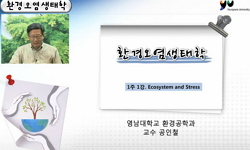In order to investigate the possibility for use to control environmental pollution, Kenaf(Hibiscus cannabinus L.) was used to obtain information of their growth and CO<sub>2</sub> response under different temperatures and CO<sub>2<...
http://chineseinput.net/에서 pinyin(병음)방식으로 중국어를 변환할 수 있습니다.
변환된 중국어를 복사하여 사용하시면 됩니다.
- 中文 을 입력하시려면 zhongwen을 입력하시고 space를누르시면됩니다.
- 北京 을 입력하시려면 beijing을 입력하시고 space를 누르시면 됩니다.

환경정화 자원식물 개발 - 양마의 CO<sub>2</sub> 흡수 및 생육반응 - = Development of Plant Resources for the Control of Environmental Pollution - CO<sub>2</sub> Absorption and Growth Response to CO<sub>2</sub> in Kenaf(Hibiscus cannabinus L.) -
한글로보기https://www.riss.kr/link?id=A106672599
- 저자
- 발행기관
- 학술지명
- 권호사항
-
발행연도
2003
-
작성언어
-
- 주제어
-
KDC
500
-
등재정보
KCI등재
-
자료형태
학술저널
- 발행기관 URL
-
수록면
103-115(13쪽)
- 제공처
-
0
상세조회 -
0
다운로드
부가정보
다국어 초록 (Multilingual Abstract)
In order to investigate the possibility for use to control environmental pollution, Kenaf(Hibiscus cannabinus L.) was used to obtain information of their growth and CO<sub>2</sub> response under different temperatures and CO<sub>2</sub> concentration. The highest percentage of germination and aboveground dry mass of Kenaf were found at 30℃ and 35℃ by 89.0% and 3.2g, respectively under different temperatures. The amount of CO<sub>2</sub> absorption and aboveground dry mass production of Kenaf were higher than those of maize during the whole growing period and the last sampling of aboveground dry mass of Kenaf and maize were 252.9g and 200.8g, respectively. The highest plant height was found at 400ppm by 131.0cm and the next was in the order of 600ppm by 129.3cm, and 800ppm by 108.8cm. Leaf area was higher in the order of 400ppm > 600ppm > 800ppm, whereas leaf dry mass was in the order of 800ppm > 600ppm > 400ppm under different CO<sub>2</sub> concentration, showing that leaf became thicker as CO<sub>2</sub> concentration was increased. Days from seeding to flowering became shorter by 13 days in 35/25℃ compared with 25/15℃ between two temperature regimes and they also became shorter as CO<sub>2</sub> concentration was increased. Aboveground dry mass was higher in 35/25℃ than that of 25/15℃ between two temperature regimes, while it was increased in the order of 800ppm > 600ppm > 400ppm as CO<sub>2</sub> concentration was increased. Temporal changes of leaf dry mass during growth period showed no difference between CO<sub>2</sub> concentration in 25/15℃, but the highest of it was found at 800ppm in 35/25℃. The highest temporal increase of root dry mass was found at 800ppm in 25/15℃, but 35/25℃ showed no difference between different CO<sub>2</sub> concentration.
동일학술지(권/호) 다른 논문
-
수도권 소비자의 친환경농산물 소비실태 분석과 소비확대 전략
- 한국유기농업학회
- 허승욱,김호
- 2003
- KCI등재
-
- 한국유기농업학회
- 조정일,조자용
- 2003
- KCI등재
-
유럽의 유기축산 사례 및 우리나라 유기축산의 발전 방안
- 한국유기농업학회
- 안종호,조익환,이주삼
- 2003
- KCI등재
-
Vermicomposting에 의한 우분과 음식물쓰레기의 처리에 관한 연구
- 한국유기농업학회
- 조익환,이주삼
- 2003
- KCI등재




 ScienceON
ScienceON 코리아스칼라
코리아스칼라






